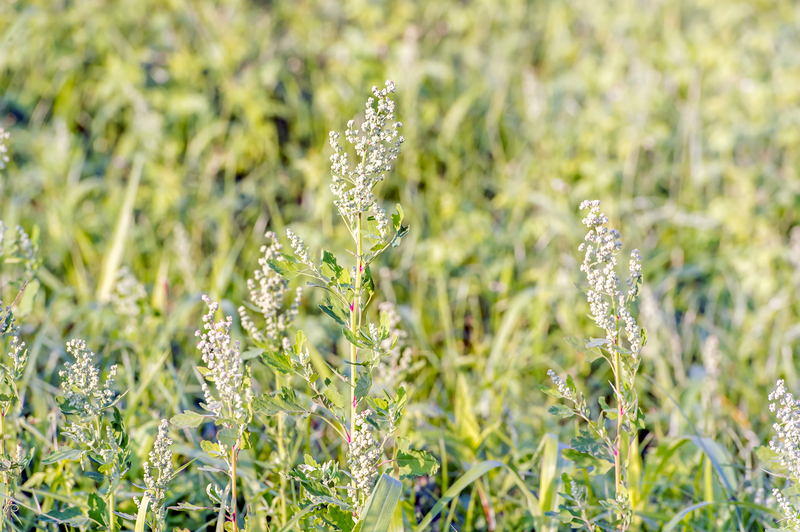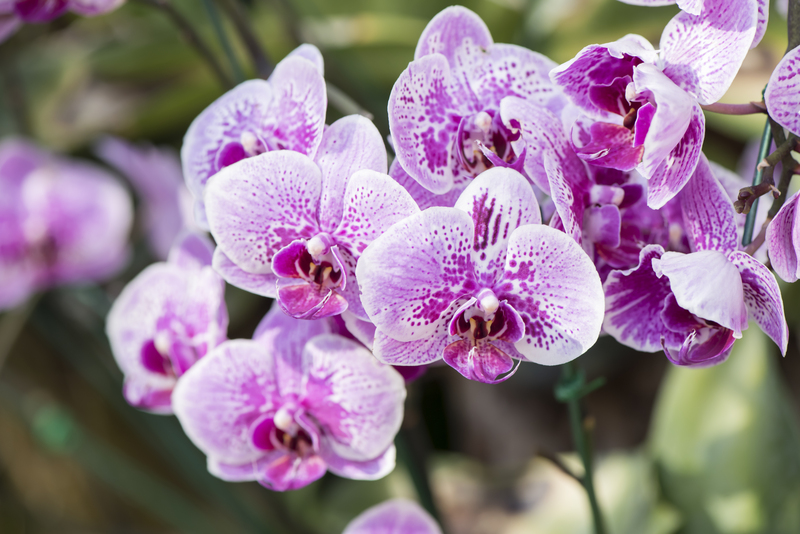Embellishing Gardens with Durable, Dog-Friendly Plants
Posted on 14/08/2025
Embellishing Gardens with Durable, Dog-Friendly Plants: A Comprehensive Guide
For many pet owners, a garden is not simply a decorative outdoor space--it's a haven for both human relaxation and canine adventure. Yet, achieving a vibrant and dog-friendly landscape can seem challenging. Active paws, curious noses, digging tendencies, and the risk of plant toxicity all play a part in plant choice. This article explores practical and creative ways for embellishing gardens with durable, pet-safe plants, ensuring your backyard is both beautiful and safe for your furry companions.

Why Choose Dog-Friendly, Resilient Plants?
A lush garden can quickly suffer at the paws of energetic dogs. Fragile flowers can get trampled, and toxic species might endanger pets' health. By focusing on tough, pet-safe plants, gardeners can maintain both aesthetic appeal and peace of mind, knowing their four-legged friends are safe to roam.
- Safety: Many common garden plants, such as lilies, foxgloves, and azaleas, are toxic to dogs and can cause anything from mild stomach upset to life-threatening reactions.
- Durability: Strong, resilient species withstand trampling and playful roughhousing much better than delicate varieties.
- Low Maintenance: Hardy, dog-friendly plants usually require less care and are forgiving of less-than-ideal growing conditions.
- Year-Round Interest: These resilient varieties continue thriving and beautifying the garden through changing seasons, offering an ever-pleasant environment for pets and humans alike.
Key Features of Dog-Friendly Plant Choices
When embellishing your garden with dog-safe plants, keep these main characteristics in mind:
- Toxicity: Always research a plant's toxicity to pets before introducing it into your garden.
- Thick Foliage: Dense, tough leaves are less likely to be damaged by dogs' activity.
- Ground Cover: Low-growing species create cushioned surfaces for running or resting.
- Non-Thorny/Friendly Textures: Avoid sharp thorns, spines, or prickly leaves that could harm playful pups.
- Resilience: Seek out drought-tolerant and fast-recovering plants when possible.
The Best Dog-Safe, Durable Plants for Your Garden
1. Marigold (Tagetes spp.)
Marigolds top the list for embellishing gardens with vivid color and dog-safe blooms. These cheerful yellow and orange flowers thrive in sunny spots, are non-toxic to dogs, and their strong scent can even help repel pests.
- Sunlight: Full sun
- Soil: Well-drained
- Bonus: Low maintenance, fast-growing annual
2. Camellia (Camellia japonica)
For those looking to add lush greenery and winter flowers, camellias are an excellent, dog-friendly shrub. Their waxy leaves and bright blooms are resilient and safe for chewing canines.
- Sunlight: Partial shade
- Soil: Acidic, well-drained
- Bonus: Evergreen foliage, provides year-round screening
3. Ornamental Grasses
Sturdy ornamental grasses like Fountain Grass (Pennisetum alopecuroides) and Maiden Grass (Miscanthus sinensis) bring texture and movement to the garden. They're highly resilient to dog traffic and non-toxic.
- Sunlight: Full sun to light shade
- Soil: Versatile, drought-tolerant
- Bonus: Requires minimal maintenance and adds vertical interest
4. Bee Balm (Monarda didyma)
Bee Balm offers clusters of bee-attracting flowers in shades of red, pink, and purple. As a member of the mint family, it's generally safe for dogs (though excessive ingestion should still be avoided).
- Sunlight: Full sun
- Soil: Moist, well-drained
- Bonus: Attracts pollinators and resists deer and rabbits
5. Daylily (Hemerocallis spp.)
This adaptable perennial features sword-like leaves and showy flowers. Unlike true lilies, daylilies are non-toxic to dogs, making them a safe option for most gardens.
- Sunlight: Full sun to partial shade
- Soil: Adaptable
- Bonus: Drought-tolerant, wide range of colors available
6. Snapdragon (Antirrhinum majus)
Snapdragons are classic, cottage-garden favorites well-suited for dog-friendly landscapes. Their robust stalks hold up to playful paws, and while rarely eaten, they're considered non-toxic.
- Sunlight: Full sun
- Soil: Moderately fertile, well-drained
- Bonus: Highly colorful and attractive to pollinators
7. Sunflower (Helianthus annuus)
For a bold statement, sunflowers provide towering blooms, edible seeds, and dog-proof stems. They're an ideal choice for embellishing your garden with dog-safe plants.
- Sunlight: Full sun
- Soil: Well-drained
- Bonus: Fast-growing annual, loved by birds
8. Herbs: Basil, Rosemary & Thyme
Many culinary herbs not only enrich your cooking but also serve as safe, aromatic greenery for dog-inclusive gardens. Basil, rosemary, and thyme are robust and generally non-toxic.
- Sunlight: Full sun
- Soil: Well-drained, not overly fertilized
- Bonus: Useful in the kitchen and naturally deter some insects
9. Spider Plant (Chlorophytum comosum)
Though known as a houseplant, Spider Plant can be used outdoors in shaded garden beds or containers. Their arching leaves and resilience make them suitable for dog-friendly landscaping.
- Sunlight: Shade to partial sun
- Soil: Well-drained, moist
- Bonus: Tolerates a wide range of conditions, easy to propagate
10. Coral Bells (Heuchera spp.)
Coral Bells, with their colorful foliage, create striking borders and tolerate dog traffic. They're generally safe for pets and thrive in a variety of soils.
- Sunlight: Full shade to partial sun
- Soil: Well-drained, organic
- Bonus: Evergreen in mild climates, variety of leaf colors
Design Strategies for Durable, Dog-Friendly Gardens
Pathways and Play Zones
Understanding your dog's favorite routes and behaviors is essential for garden planning. Dogs often establish their own trails, so consider using durable ground covers like clover or buffalograss along these paths to prevent unsightly wear. For high-traffic areas, flagstones or bark mulch provide soft, paw-friendly surfaces.
Raised Beds and Fencing
To protect more delicate or seasonal plantings, incorporate raised beds, sturdy containers, or low fencing. This approach not only shields fragile plants from canine enthusiasm but also gives your garden multi-level visual interest.
Dog Digging Corners
If your pet loves to dig, designate a special "doggy dig zone" with loose soil, sand, or mulch. Train your dog to use this area, keeping the rest of the garden tidy and intact. Surround it with robust borders like lavender (safe in moderation) or lamb's ear for a soft touch.
Garden Maintenance and Canine Harmony
Regular Inspection
Even with dog-friendly landscaping, it's vital to routinely check your garden for hazards--broken plant stems, mold, sharp objects, or self-sowing weeds that might not be safe for pets. Promptly remove debris and monitor for any new volunteer plants that could be harmful.
Mulching Techniques
Using the right mulch is another aspect of dog-safe garden design. Opt for pet-safe mulches like cedar chips or pine straw rather than cocoa mulch, which can be toxic if ingested. Stone mulch is another long-lasting option for pathways and borders.
Training Your Dog for Garden Respect
Coupling your planting strategies with consistent training is crucial. Teach your dog basic garden rules--such as staying on paths and avoiding vegetable beds--using treats and positive reinforcement. Over time, your dog learns which areas are off-limits, minimizing accidental damage.
Common Plants to Avoid in Dog-Friendly Gardens
Not all beautiful plants are suitable for a canine-friendly landscape. Some popular species are harmful or even deadly to pets. When embellishing your garden, be sure to avoid:
- Oleander
- Foxglove
- Lily of the Valley
- Azaleas/Rhododendrons
- Sago Palm
- Autumn Crocus
- Daffodils
- Grapevines (grapes/raisins are toxic to dogs)
Always check the ASPCA's list of toxic and non-toxic plants or consult your veterinarian before adding new species to your garden.

Seasonal Planting Tips for Pet-Safe, Durable Gardens
To ensure year-round beauty and resilience in your garden, select varieties with staggered bloom times and consider cold-hardy and heat-tolerant species appropriate for your local climate.
- Spring: Plant robust perennials and bulbs like spider plants and daylilies.
- Summer: Add annuals like marigolds and sunflowers for continuous color.
- Autumn: Sow cool-season grasses and herbs, and tidy or mulch perennial beds.
- Winter: Evergreen shrubs and ground covers ensure your garden remains visually appealing and provides shelter for your pets year-round.
Conclusion: Creating an Inviting, Safe Dog-Friendly Garden
Dog-friendly gardening does not mean sacrificing beauty or creativity. By embellishing your garden with durable, pet-safe plants and applying thoughtful design principles, you can achieve a vivid outdoor sanctuary for both you and your furry friends. Choose resilient, non-toxic species, provide pathways and protected beds, and maintain your landscape with both pets and aesthetics in mind. With the right preparation and choices, your garden will flourish as a space where dogs and people together can enjoy the fragrance, color, and vitality of nature.
Ready to transform your backyard into a lush, durable, and safe haven for your canine companion? Explore these dog-friendly plant ideas and enjoy many happy, tail-wagging hours outdoors!

